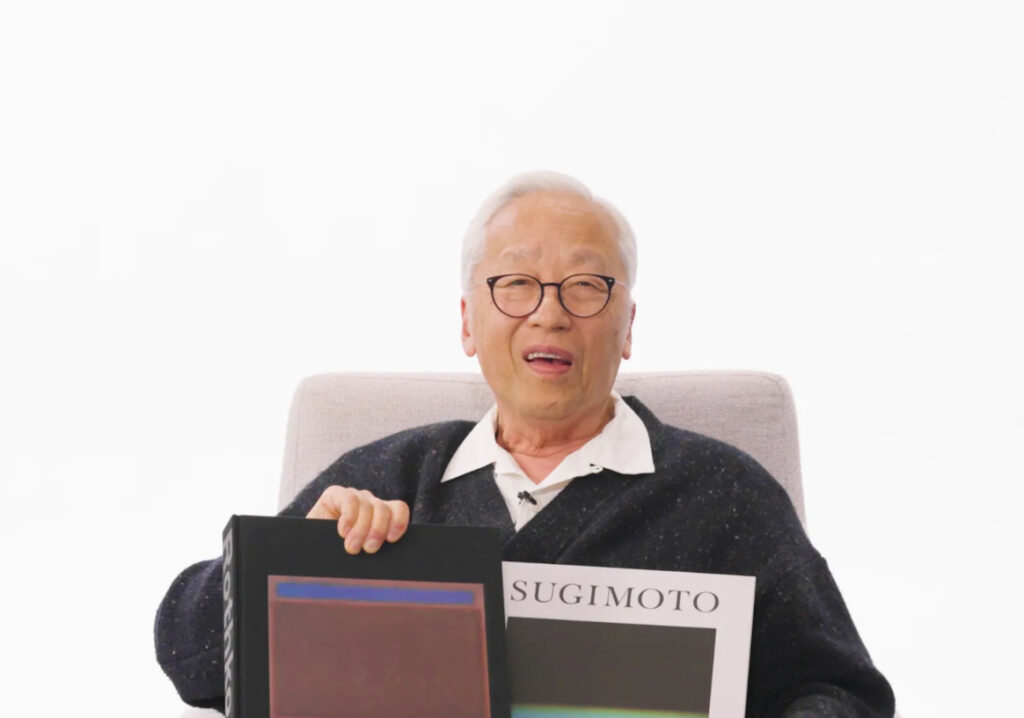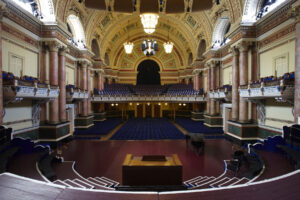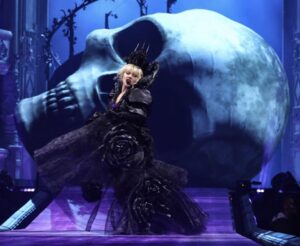The Stillness Between Sound and Sight
On the latest episode of Under the Influence, Artforum’s acclaimed podcast series, Japanese artist, photographer, and architect Hiroshi Sugimoto offered listeners a rare glimpse into the auditory dimensions of his famously silent visual work. With a voice as deliberate and composed as his photographs, Sugimoto shared his longstanding reverence for the music of Wolfgang Amadeus Mozart, how a fateful visit to a Metropolitan Museum of Art exhibition catalyzed his life’s trajectory, and why his observatory-in-progress in Odawara, Japan, may become his most expansive—and metaphysical—work yet.
As Sugimoto’s solo exhibition opens at the Winsing Arts Foundation in Taipei, running from April 12 to August 31, 2025, his reflections serve as a frame through which his entire body of work can be reconsidered: not only as aesthetic meditation, but as philosophical architecture.
A Symphony of Silence: Sugimoto and the Spirit of Mozart
Sugimoto begins the interview with a seemingly simple confession: he listens to Mozart while working. But for the 75-year-old artist, music is not background—it is infrastructure. “When I hear Mozart,” he says, “I feel as though time stops. Or maybe time dissolves.”
The parallels between Mozart’s compositions and Sugimoto’s photographs are startling when one considers their internal symmetry. Like a Mozart sonata, a Sugimoto seascape exists in suspended cadence—poised, balanced, eternal. His photographs of the ocean, taken from the same horizon line around the globe, collapse time and space into an indivisible present, much like a perfect chord collapses multiple notes into a singular resonance.
Sugimoto notes that while he studied mathematics and economics before turning to art, it was Mozart who taught him the power of formal rigor yielding emotional transcendence. “Mozart is not emotional like Beethoven,” he explains. “His perfection is godlike. No wasted notes. That’s how I want my art to feel.”
The Museum and the Spark: A Met Moment That Changed Everything
One of the more arresting moments in the Under the Influence episode arrives when Sugimoto recounts a visit to the Metropolitan Museum of Art in New York in the early 1970s. At the time, he was a student of commercial photography, recently relocated from Tokyo to Los Angeles, then drifting toward New York’s post-minimalist scene.
He wandered into an exhibition of classical sculpture and, standing before a marble bust, took a photograph. It was this moment—an impulse to photograph something timeless—that set in motion one of contemporary photography’s most philosophical careers.
“What I saw through the lens was different than what I saw with my eyes,” Sugimoto recalls. “It wasn’t just the sculpture—it was the memory of the sculpture, the idea of it, floating in time.”
That instinct would mature into some of his most iconic series, including Portraits (wax figures lit like Old Masters) and Theaters (long-exposure images of entire films captured as a glowing screen in ornate auditoriums). The Met’s sculptures gave Sugimoto a new mission: to show not what things are, but what they feel like when viewed across time.
Winsing Arts Foundation: A Retrospective Without Repetition
Sugimoto’s current exhibition at the Winsing Arts Foundation in Taipei spans nearly five decades of work, but it avoids the trap of nostalgia. Instead of a chronological retrospective, the show is organized around themes: Time Exposed, Architectural Forms, Seascapes, Dioramas, and a preview of new works inspired by his Odawara observatory project.
Curated by Lin Mei-Wen in collaboration with Sugimoto Studio, the show is staged with what the artist calls “empty precision”—each photograph given its own space, its own breath. The lighting is dim, almost cinematic, allowing the silver gelatin prints to shimmer as if they’re slightly radioactive.
Notably, the Taipei show includes three never-before-seen images from Sugimoto’s Sea of Japan series, taken in the early 1980s but only recently developed. These images—gray-black abstractions of water and sky—are as minimal as brushstrokes, yet they resonate like visual gongs. “It’s the same sea Bashō looked at,” Sugimoto says in the podcast, referencing the haiku master. “But I tried to see it without time.”
Architecture as Cosmos: Building the Odawara Observatory
While Sugimoto is often labeled a photographer, his ambitions have always stretched beyond the frame. Since the 2000s, he has turned increasingly toward architecture—not just as a medium of expression, but as a metaphysical proposition. His most ambitious project to date is the Enoura Observatory in Odawara, Japan: a cultural and astronomical complex overlooking Sagami Bay.
The observatory, which Sugimoto describes as “a ruin from the future,” blends ancient Japanese design with Greco-Roman proportions. Constructed from stone, glass, steel, and cedar, it features a 70-meter optical glass stage, a tunnel aligned with the winter solstice sunrise, and even a Noh theater facing the sea. The goal? To create a space where art, nature, and the cosmos intersect.
Sugimoto insists this isn’t about spectacle. “I want people to come and see the sunrise, to hear the wind across the stones, to wait for something eternal,” he tells Artforum. “This is not architecture for the eye. It is architecture for the spirit.”
The Winsing exhibition includes models, drawings, and large-scale photographs of the observatory, presented alongside calligraphic works inspired by Sugimoto’s lifelong study of Zen.
Philosophy of the Shutter: Capturing the Unseeable
One of the enduring questions across Sugimoto’s career is: what can a photograph reveal that the eye cannot? In Under the Influence, he returns to this question with the clarity of a physicist and the humility of a monk.
“When I press the shutter, I’m not just capturing light,” he says. “I’m capturing duration. My exposures are not moments—they are accumulations.”
This is most evident in his Theaters series, where each image is a record of an entire film projected in one exposure. The result is a glowing white screen—a portal, a void—surrounded by the ornate architecture of time gone by.
Even in his Architecture series—featuring iconic buildings by Le Corbusier, Frank Lloyd Wright, and Tadao Ando—Sugimoto blurs the image slightly, removing sharpness in favor of essence. “Too much detail is noise,” he says. “I prefer memory over information.”
A Legacy Beyond Photography
Sugimoto’s work has found homes in every major art institution from the Guggenheim to the Mori Art Museum. But what’s perhaps more significant is the way his influence has seeped into architecture, sound design, theater, and even fashion. Rei Kawakubo of Comme des Garçons has cited him as a conceptual influence. Architect Tadao Ando once called Sugimoto “a master of spiritual proportion.”
Through his art foundation in Odawara and ongoing teaching efforts in Japan, Sugimoto continues to mentor young artists. He teaches them not technique, but perspective. “I tell them: if you want to be a great artist, you must study death,” he says. “You must know that all things are impermanent—and still try to make something eternal.”
Final Reflections: The Artist as Temporal Medium
By the end of the Under the Influence episode, one begins to understand that Sugimoto is not merely an artist who photographs the past—he is an artist through whom the past speaks.
His admiration for Mozart isn’t anecdotal—it’s architectural. His exposure to classical sculpture at the Met wasn’t chance—it was a calling. His observatory in Odawara isn’t a monument—it’s a lens, aligned not with ego, but with the sky.
And as his work graces the halls of the Winsing Arts Foundation in Taipei through summer 2025, it’s clear that Sugimoto remains one of the few contemporary artists who has never confused trend with truth. He doesn’t document time. He distills it. And in doing so, he invites us to linger—just a little longer—in the silence between the notes.
No comments yet.







